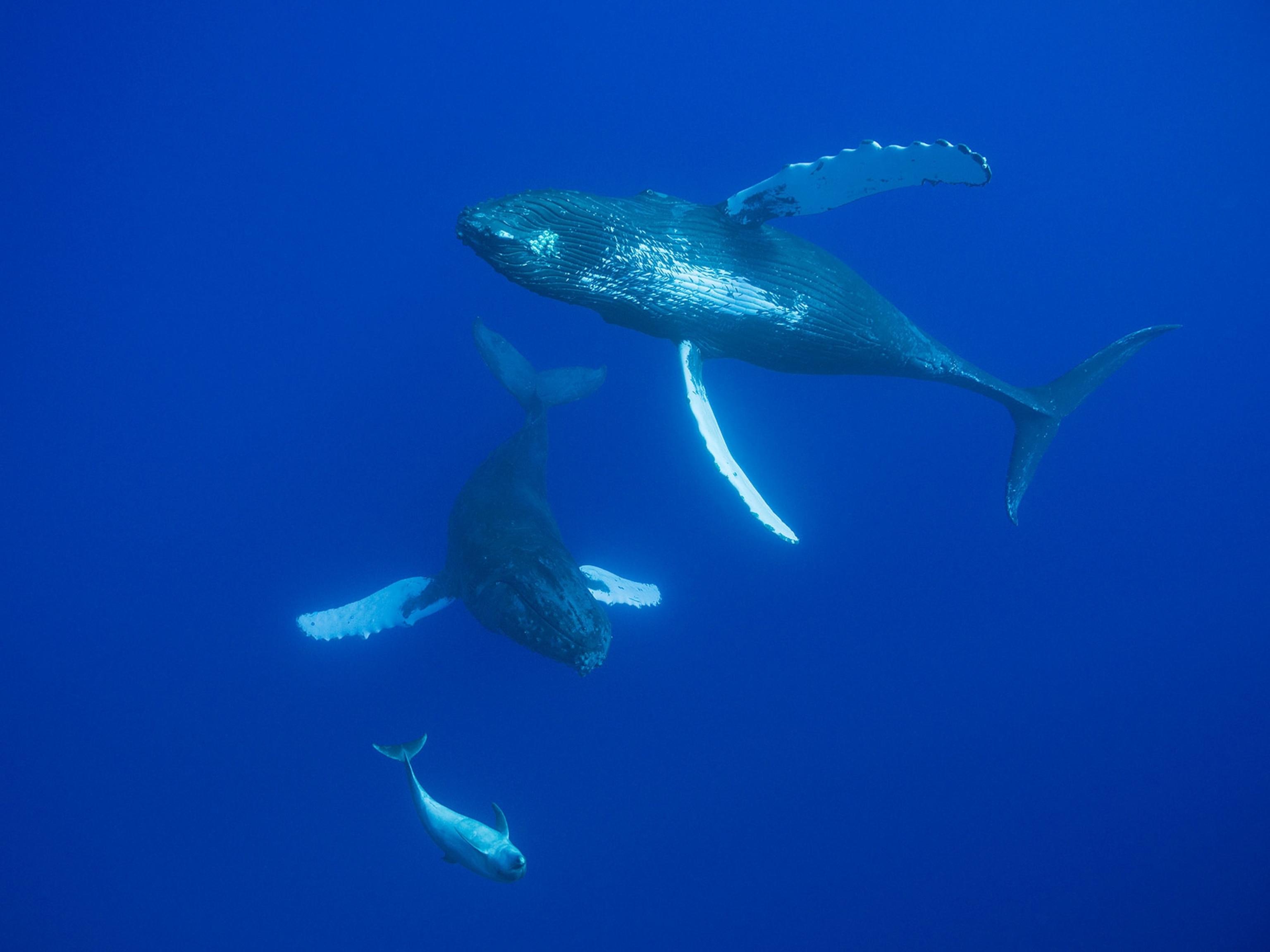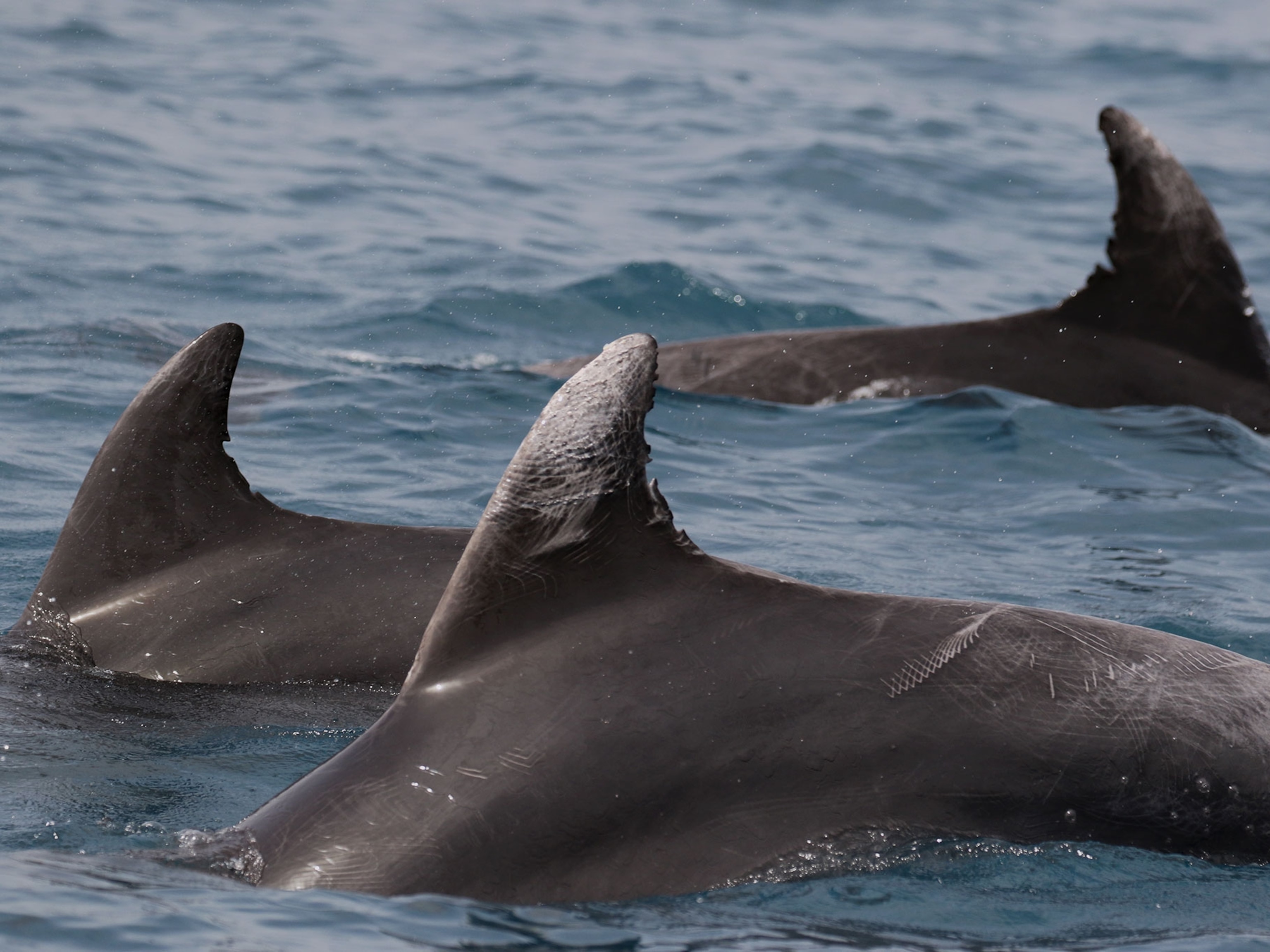
Military whales and dolphins: What do they do and who uses them?
For all our advanced technology, nothing beats the ability of marine mammals to find things in the ocean.
When a beluga whale started approaching fishing boats and pulling on ropes near a small Norwegian town in April, people became suspicious. The beluga was wearing a harness that looked like it could carry a camera, the Guardian reports, and “Equipment of St. Petersburg" was stamped on the inside.
Marine experts have suggested that the whale was part of a Russian military program that trains cetaceans for operations. It may sound strange, but it's not unheard of.
(Most Marine Mammals Are Missing One Mysterious Gene)
In 2017, Russian state television reported that the country was experimenting with using beluga whales, bottlenose dolphins, and several species of seals to guard entrances to naval bases, assist divers, and possibly kill strangers who entered their territory. Belugas were dropped from the program, however, when it became clear that swimming for long periods in cold, polar waters made the whales sick.
And when Russia invaded Crimea in 2014, it took over a Ukrainian military unit that included bottlenose dolphins, according to news reports. The Ukranian "combat dolphins," based in Sevastopol, were trained to search for and tag underwater mines or unwanted swimmers attempting to access restricted waterways, says RIA Novosti.
Using marine mammals for military purposes isn't restricted to Russia—the U.S. Navy has had a similar program since the 1960s. The ability of these animals to detect and find targets at depth or in murky water is something technology can't duplicate yet but which militaries find very valuable.
The U.S. Navy trains its marine mammals—including California sea lions and bottlenose dolphins—to find and retrieve equipment lost at sea and to identify intruders swimming into restricted areas. The dolphins are also used to detect mines that are either buried in the seafloor or floating in the water, tethered to an anchor.
Nothing like the real thing

"[Bottlenose dolphins] are better than any machine as far as detecting mines," says Paul Nachtigall, head of the marine mammal research program at the University of Hawaii in Kane'ohe Bay. They can also do it much faster than a machine can.
Dolphins can be especially effective close to shore, where crashing surf and ship traffic generate a lot of noise, Nachtigall says. Mechanical systems can be overwhelmed by all the competing signals, but not dolphins.
It's because their sonar is so finely tuned, he explains. Dolphins, and relatives like killer whales, send out a series of sounds that bounce off of objects in the surrounding environment. The mammals pick up the return echoes and form an acoustic picture of their environment, an ability known as echolocation.
Experiments Nachtigall conducted in the mid-1990s with a resident bottlenose dolphin named BJ demonstrated this sensitive ability. Nachtigall asked BJ to distinguish between metal cylinders made of either stainless steel, brass, or aluminum. Even though he buried the four inch-long objects under two feet of mud, BJ passed with flying colors.
Researchers still don't know how dolphins do this, Nachtigall says. But it's a topic that has captured the attention of military and civilian scientists for decades.
Out of place
California sea lions, while they don't possess sonar capabilities, have excellent eyesight. "They're really good at finding things that are out of place," such as lost equipment, says Nachtigall.
The U.S. Navy uses them to find and retrieve unarmed test ordnance like practice mines. Handlers give a sea lion an attachment system it can hold in its mouth and send the mammal overboard. Once the animal finds its target, it clamps the device to it and handlers in a boat at the surface can bring the object in.
A 2011 media demonstration in San Diego Bay, California, featured a former U.S. Navy SEAL attempting to infiltrate the harbor with an unarmed mine. The Navy deployed dolphins and sea lions to patrol the area, and both caught the diver on every one of his five attempts. The sea lion even managed to attach a clamp to the diver's leg, and handlers on the surface reeled him in like a fish.
Both California sea lions and bottlenose dolphins are fairly hardy, smart, and very trainable, says Nachtigall. Sea lions also have the advantage of being amphibious. That's why the U.S. Navy ended up using them instead of other marine mammals like false killer whales or belugas, which they also initially looked at. (See "Dolphins Have Longest Memories in Animal Kingdom.")





